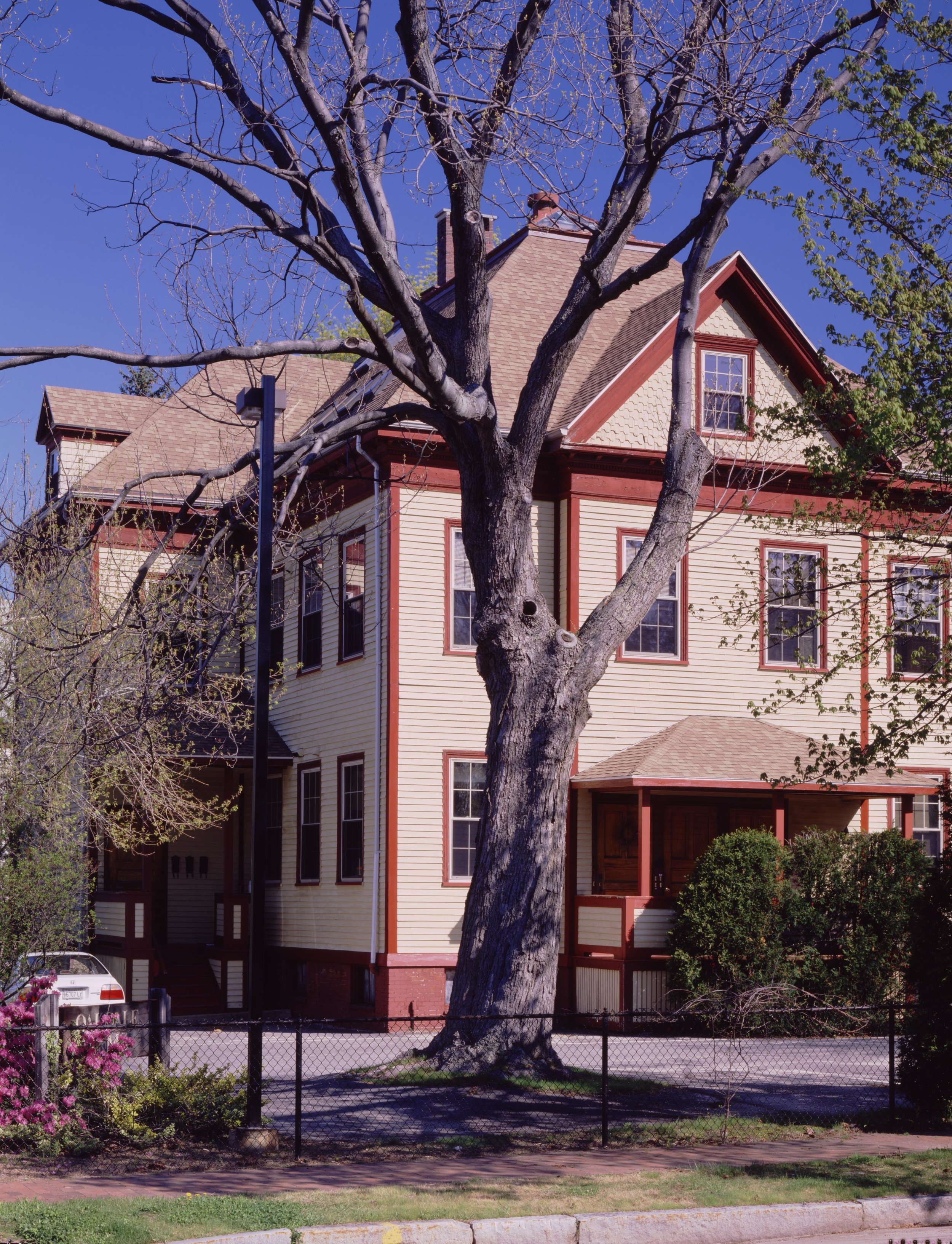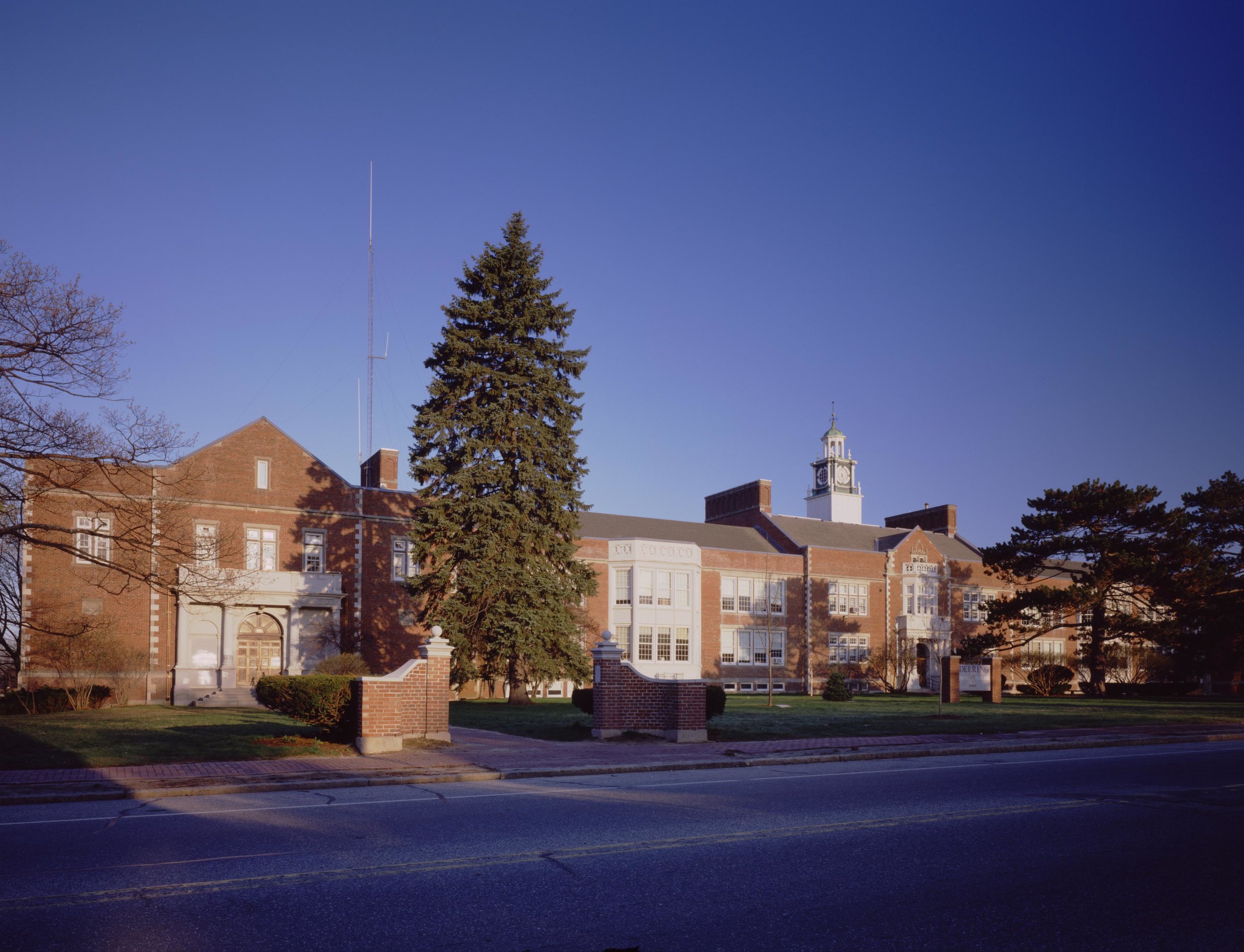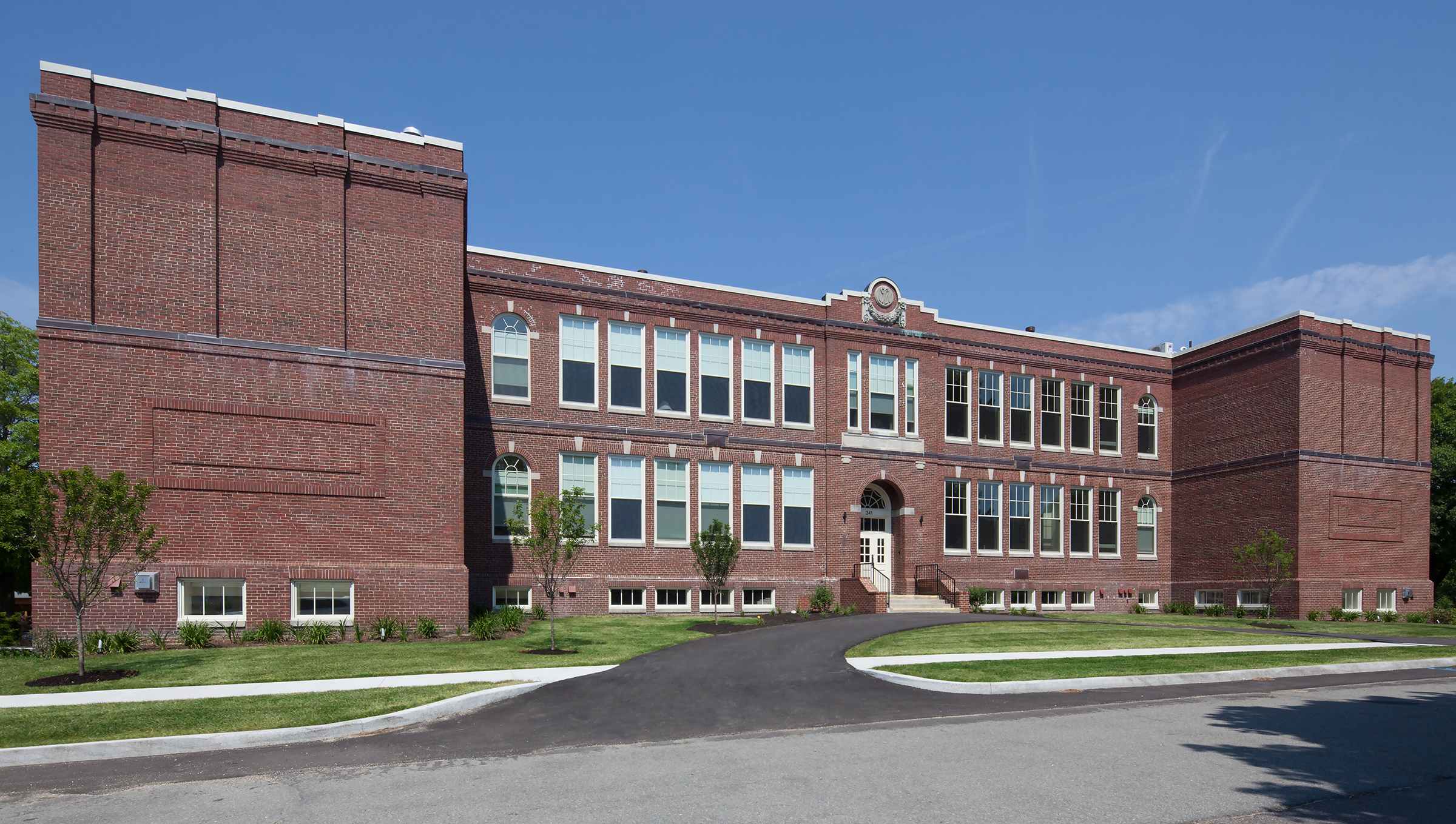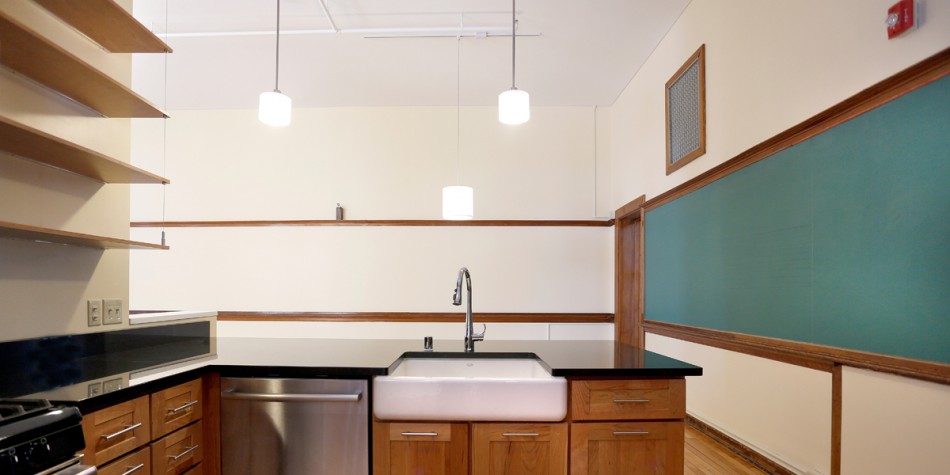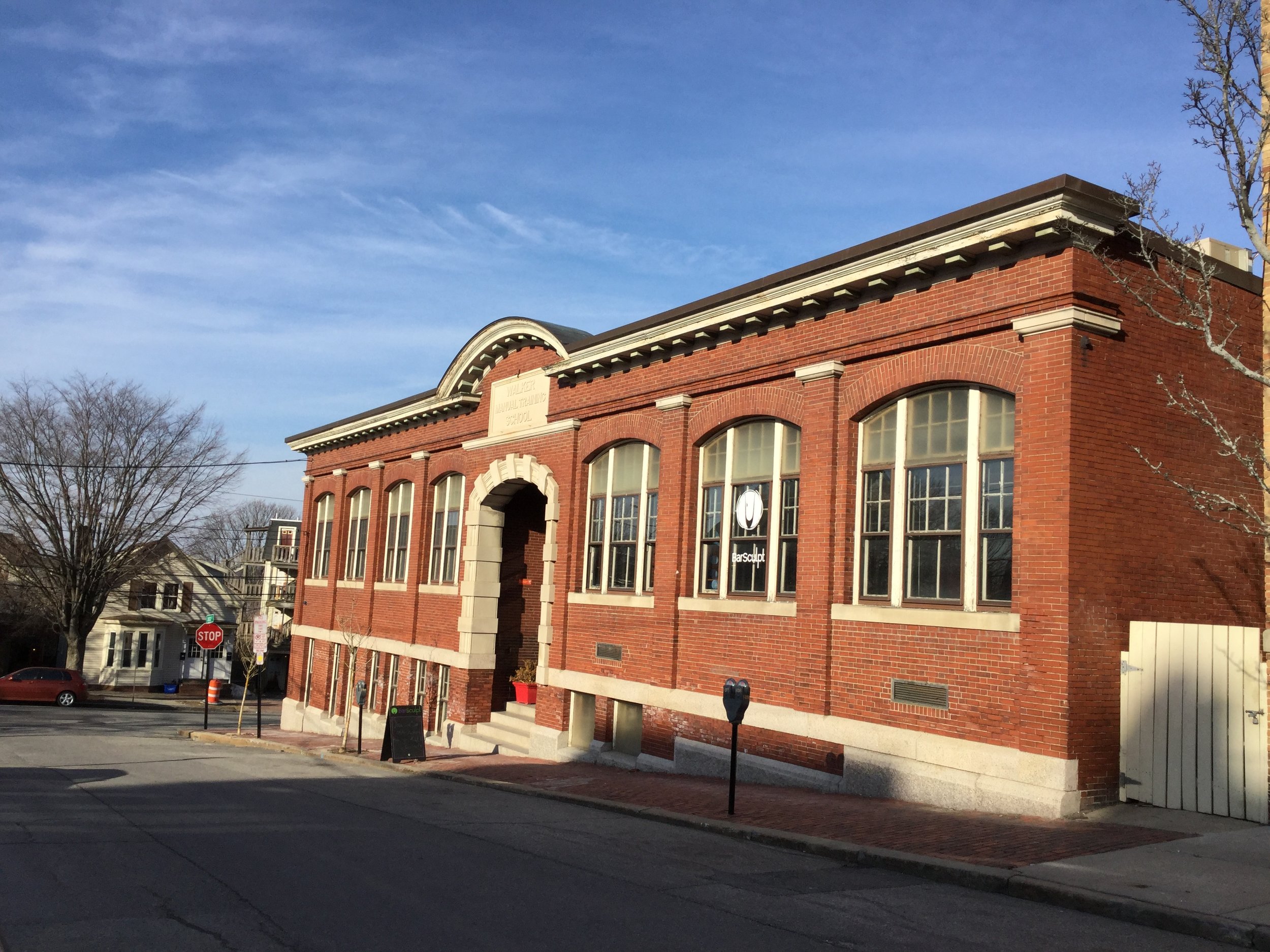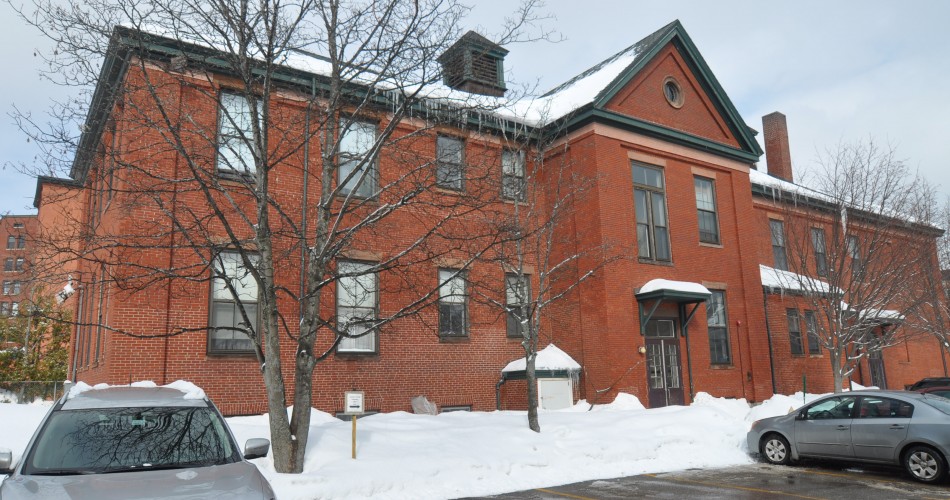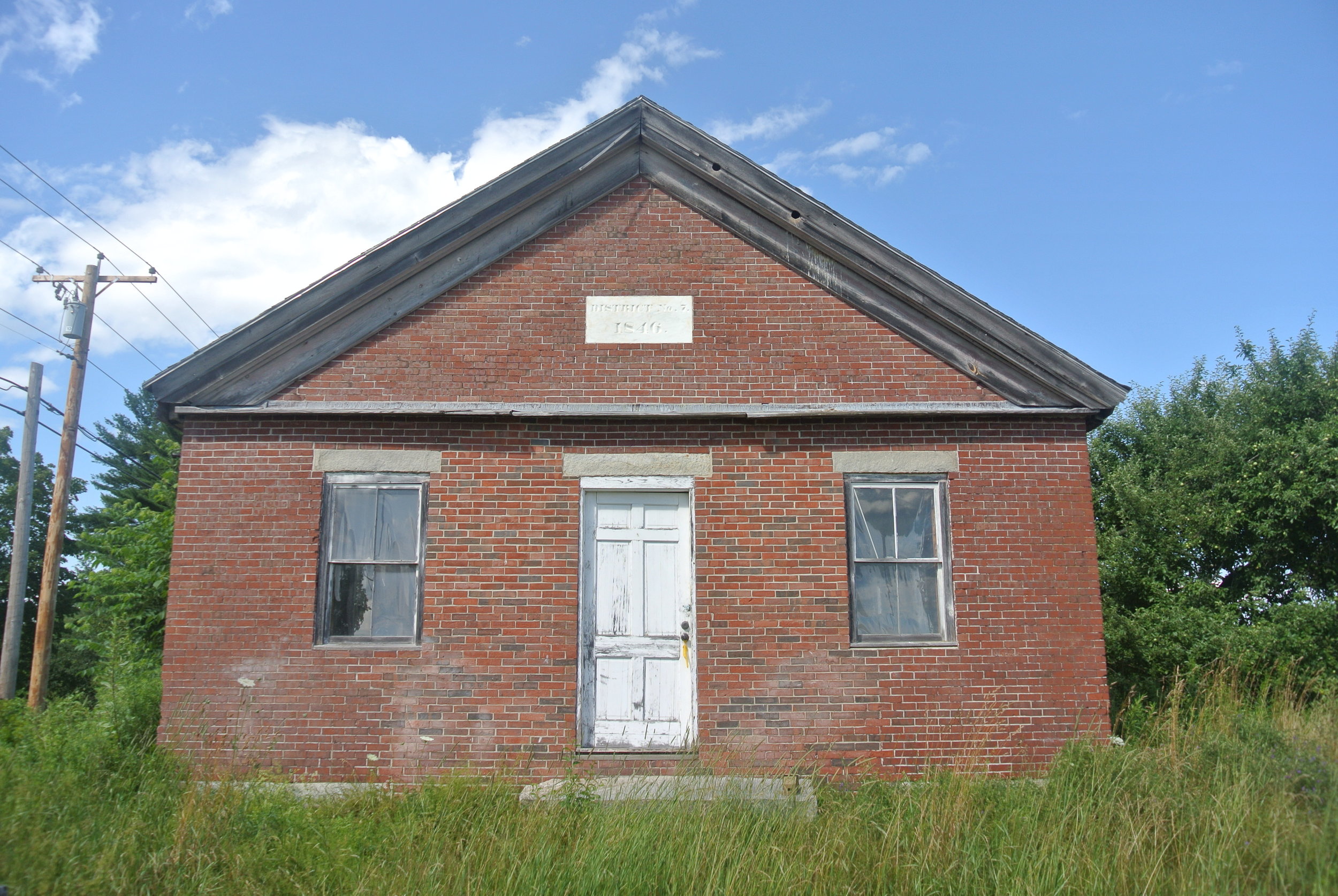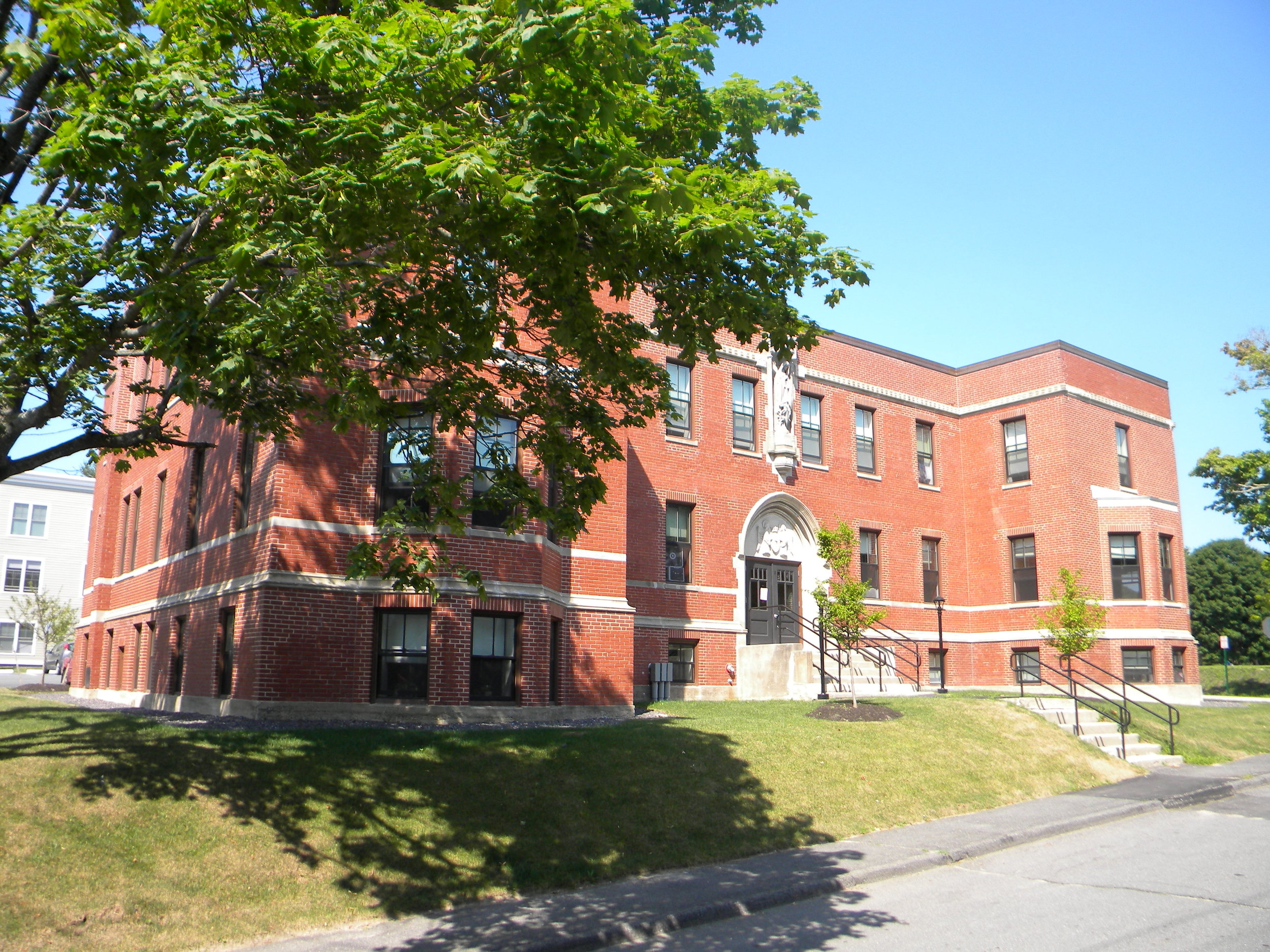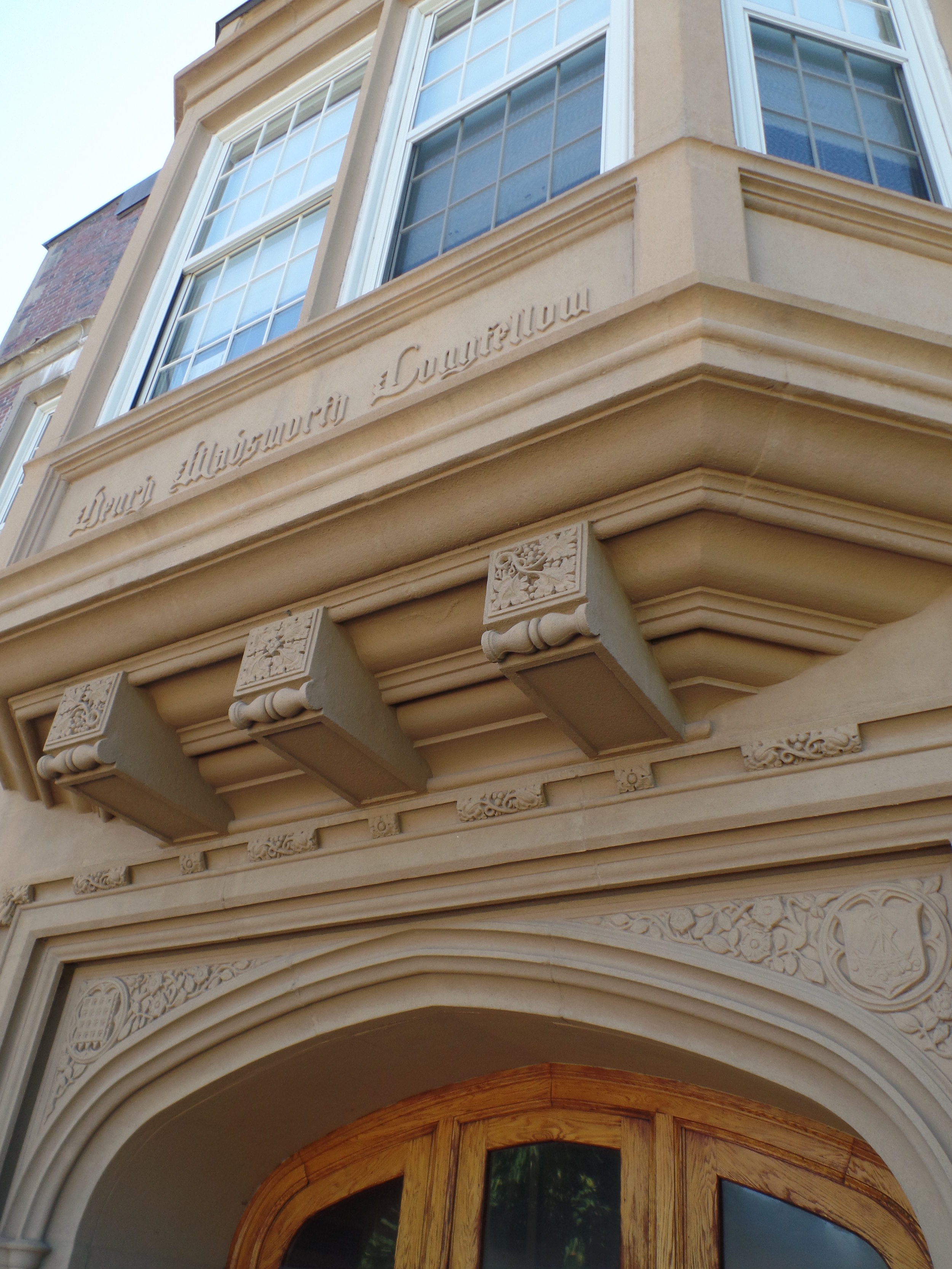Photos by Todd Caverly
“Historic neighborhood schools are anchors within our communities. They offer students distinctive and unique places to learn. They provide constant and subtle lessons about the history of their town and respect for the past. And, as they are often within walking distance, local schools encourage students to walk or bike, promoting healthy activity and a chance to experience and engage with their surroundings.”
The National Trust for Historic Preservation, Washington, D.C.
In 2000 the National Trust for Historic Preservation added neighborhood schools to its annual list of most endangered historic places. It aimed thereby to raise awareness of public policies that discourage maintenance of existing neighborhood schools, the lack of money many schools need for repairs, and the trend toward large consolidated schools in locations that are not within walking distance for most students.
While the historic character of older local schools is often highly valued by the communities they serve, these buildings have become substandard due to outdated infrastructure and deferred basic maintenance. As a consequence of this neglect and changing population and land use patterns, investment in school infrastructure is needed throughout the Greater Portland area.
When Historic Schools Close
In Greater Portland, as in many communities across the nation, historic neighborhood school buildings have been closed due to consolidation or lack of investment in their maintenance. As a consequence many students need to be transported to distant new schools and neighborhoods have lost a vital community asset. Happily, many historic school buildings in Greater Portland have been revitalized by developers for new uses, usually housing. State and Federal Historic Tax Credits have been an important component in many of these conversions.
Landmarks supports the rehabilitation of neighborhood schools and has awarded several such projects preservation honor awards.
Nathan Clifford School, Falmouth Street, Portland, Photo by Greater Portland Landmarks
Several years ago the Nathan Clifford School, located in the dense suburban neighborhood of Oakdale, was closed by the city of Portland. Local students are now transported to a new site outside the neighborhood. The historic school was sold to a developer who converted it into apartments using historic tax credits and conserved the open space at the rear of the building as a park.
Can Historic Schools Meet 21st Century Educational Needs?
Local schools were once thought of as important civic landmarks, built to last for generations, and representative of a community’s investment in its youngest citizens. They embodied the spirit of their neighborhoods, their city, and their community’s history. While many historic schools in Greater Portland may not be designated historic landmarks, they are often seen as local landmarks. With proper maintenance and timely upgrading, they can continue to serve their communities for many years to come.
In Portland planners and design advocates are promoting a concept called “complete neighborhoods.” This refers to locales where residents have safe and convenient access to all the goods and services needed in daily life, including a variety of housing options, shops, public schools, open spaces and recreational opportunities, transportation options, and civic services. An important element of a complete neighborhood is that it is sized for a walkable human scale and accessible to people of all ages and abilities. Historic school buildings are usually located on sites within walking or biking distance of the community members they serve and provide valuable social services, community gathering places, and access to open space and recreation outside normal school hours.
Longfellow Elementary School in Portland has the highest rate of elementary students within walking distance according to school district reports. Yet the building is in dire need of internal updating to accommodate modern educational requirements, and exterior preservation to secure the building’s envelope from the elements. The city council and school board will soon be making important decisions about the school’s future. Citizens in the school’s Deering Center neighborhood are concerned that prolonged underfunding of their school’s needs might result in its closure, like the Oakdale neighborhood experienced with the closure of the Nathan Clifford School in 2011.
The former South Portland High School, now Mahoney Middle School, South Portland, Photo by Greater Portland Landmarks
In August, the Maine State Board of Education determined that the historic Mahoney School building, currently one of two middle schools in South Portland (the other is Memorial), is eligible for state funding. Money is thus available for renovating Mahoney, replacing Mahoney, or consolidating the two middle schools. Residents are now discussing the potential consolidation of these schools as both have significant building problems and site limitations. Mahoney serves about 325 students on a fifteen-acre parcel at the corner of Ocean Street and Broadway, near Mill Creek Park. Memorial serves about 400 students on a seventeen-acre parcel in the Thornton Heights neighborhood. Local officials have started a complex multi-step process to determine the best and most cost-effective way to house the education of South Portland’s 725 students in Grades 6 through 8.
Greater Portland Landmarks encourages communities to act as good stewards of their historic school buildings and to continue to use neighborhood schools for the purpose for which they were designed. Maintenance and modernization of these existing facilities is a critically important community investment. Unfortunately, some historic schools may close. When that happens Greater Portland Landmarks advocates that they be designated as historic landmarks in order to facilitate their reuse based on access to historic tax credits. We applaud the work of local developers who have saved many of our abandoned school buildings through conversion, thus preserving these neighborhood landmarks for future generations.
For a look back at public neighborhood schools in the City of Portland visit our page on Portland's Historic Public Schools.
To learn more about preservation resources for saving neighborhood schools visit our advocacy page on Historic Schools.





